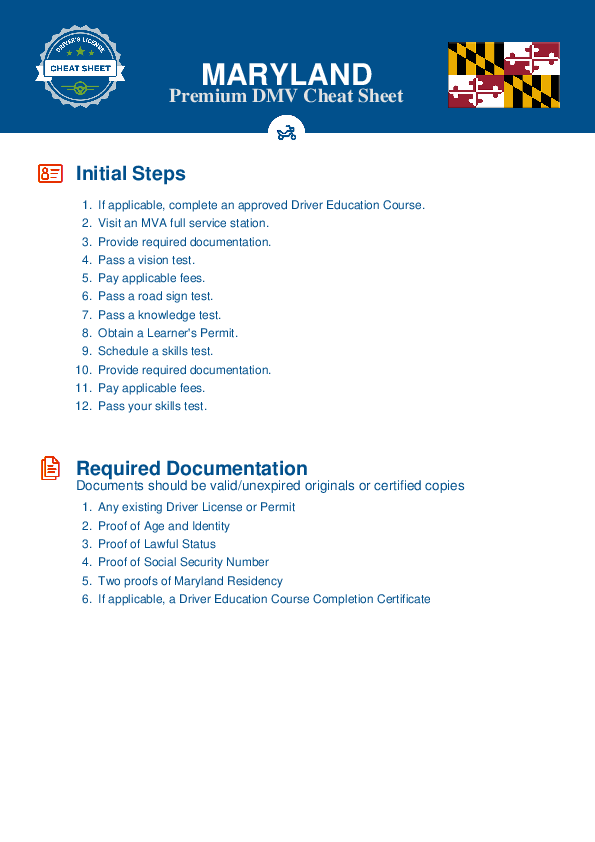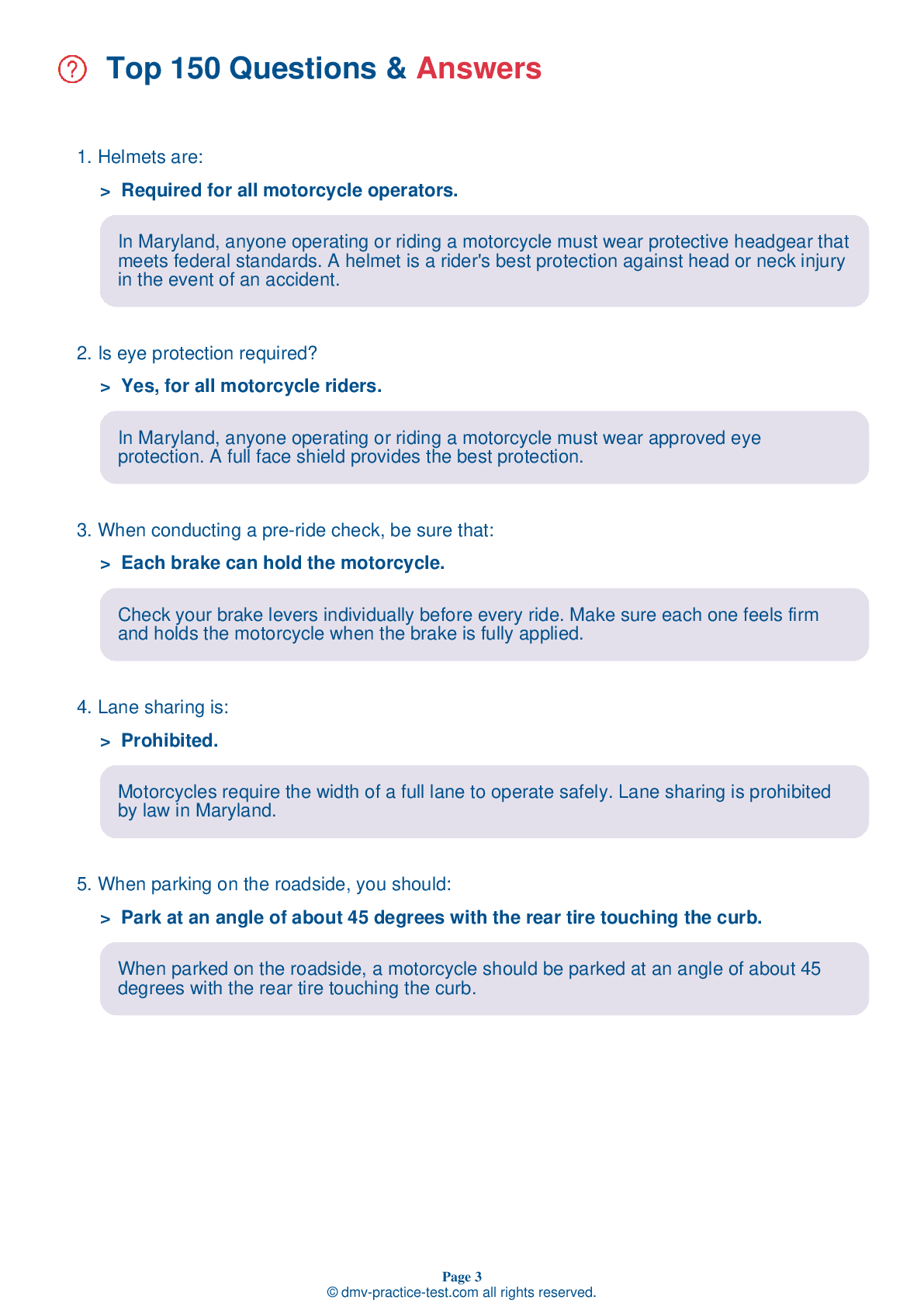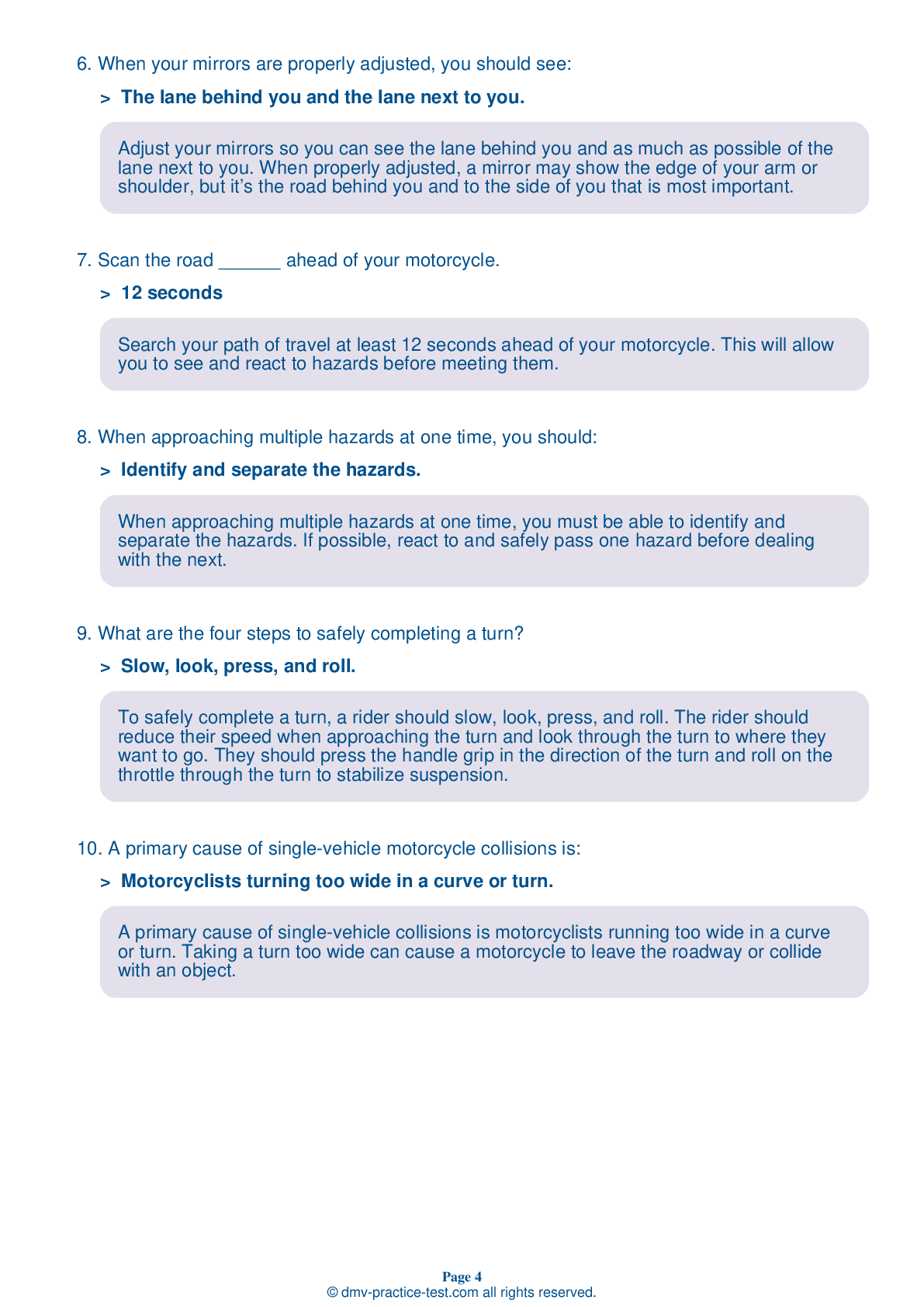Motorcycle Test | License MD 2025 | FREE Online Practice! #11 Page 2 of 4
Take this FREE motorcycle test (license in MD 2025) to check your knowledge of the road rules. To improve your results, download a motorcycle handbook online, study theory, and practice for free on our website. Still worried about how to get a motorcycle license in Maryland in 2025? Check our website for more sample tests, train as much as possible, and boost your grades!
7 . When it is likely that other drivers may attempt to squeeze into your lane, you should:
Riding in the center portion of your lane when traveling in heavy traffic can discourage other drivers from trying to squeeze into your lane next to you. Lane sharing is unsafe and is prohibited by law in Maryland.
8 . When stopping behind a vehicle, you should:
Stay well behind the vehicle in front of you, even if you are both stopped. The vehicle could back up unexpectedly, or you may need space to get out of the way of another vehicle bearing down on you from behind.
9 . When selecting a helmet, it is important that all of the following are true, except:
To ensure that you have a helmet that will provide the best possible protection, you should choose one that meets U.S. Department of Transportation (DOT) standards. It should fit snugly all the way around and have no obvious defects, such as cracks, loose padding, or frayed straps.
10 . A DOT-compliant helmet has all of the following, except:
Any U.S. Department of Transportation-compliant helmet is required to have an impact-resistant outer shell, an impact-absorbing inner liner, a comfort liner, and a chinstrap retention system.
11 . As a motorcycle operator, you can help others see you by:
To increase your chances of being seen, wear brightly-colored clothing, use your headlight at all times, and use your turn signals.
12 . A properly-fitted motorcycle:
If your motorcycle fits you properly, your feet should be able to reach the ground while you are seated. When riding your motorcycle, keep your feet firmly on the footrests.
See the exact questions that will be on the 2025 Maryland DMV exam.
99.2% of people who use the cheat sheet pass the FIRST TIME
Jeneen was tired of paying $5/gallon. She got herself a scooter that required the motorcycle license. She studyed the motorcycle test cheat sheet and passed her test the next day!
Christopher tells us how he knew nothing prior to obtaining the motorcycle study guide, and he only got one question wrong because he clicked on the wrong answer by mistake.



